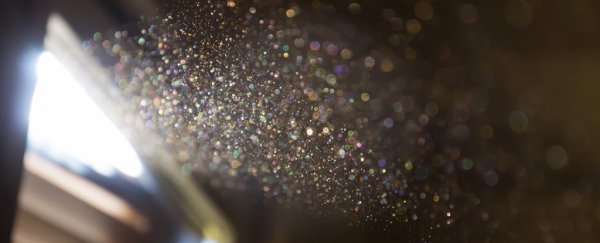People don't like dust. Nor should they. This endless accumulation of dead skin, hair, bugs, soil, animal fur, and whatever else - it gets everywhere. But it looks like that's not even the worst part.
Despite what you may think, dust isn't inert. It's a thriving microbiome in our midst, full of tiny organisms, and not all of them are good for us. What's more, these microbes floating throughout our indoor environments could be evolving into an even more serious threat, and it's all our fault.
"There is this conventional wisdom that says everything that's in dust is dead, but that's not actually the case," says environmental engineer Erica Hartmann from Northwestern University.
"There are things living in there."
She should know. In 2016, Hartmann led the first scientific study documenting the co-existence of antimicrobial chemicals and antibiotic resistance genes in organisms that inhabit the indoor dust microbiome.
Now, Hartmann's team has returned with a follow-up, and the findings give new insights on how the floating filaments in our homes could be an unexpected vector for antibiotic resistance.
The researchers sourced dust samples from 42 athletic facilities in the Pacific Northwest region, vacuuming up loose dirt from hallways, offices, and gymnasiums at places like private fitness clubs, public recreation centres, and various dance, yoga, and martial arts studios.
The team picked athletic facilities because they – like hospitals – are a known source of high levels of antimicrobial chemicals, present in things like mats and other athletic equipment, and also in cleaning agents used within the premises.
But when the researchers analysed the dust samples using spectrometry and a technique called metagenomic shotgun sequencing, they didn't just find antimicrobial chemicals in the mix.
They also found bacterial genes that contribute to antibiotic resistance – and these genetic markers were discovered in higher abundance where antibacterial chemicals like triclosan (banned in soaps by the FDA in 2016) were present in higher concentration.
That, the researchers point out, could be a problem.
"Those genes do not code for resistance to triclosan," Hartmann explains. "They code for resistance to medically relevant antibiotic drugs."
There's a lot we don't know about what's going on here. As the researchers acknowledge, their study can't prove the effect chemicals like triclosan and triclocarban are having on dust organisms – nor that the co-existence is anything but an accident.
"We don't really know how the genes or the chemicals got there," Hartmann explained in 2016 about her previous research, which used similar techniques.
"They may have arrived by completely different routes and their being found together is a coincidence. However, we know that antimicrobial chemicals can cause an increase in antibiotic resistance in other situations, so I think these results provide a good reason to take a closer look at what's going on in dust."
With that in mind, at the other extreme, the association they've found could hypothetically mean that exposure to residual antimicrobial chemicals is encouraging lifeforms that inhabit indoor dust to develop a resistance to antibiotic chemicals.
"At a minimum, our results suggest that anthropogenic antimicrobial chemicals and microbial systems are interacting somewhere in or around these buildings or their occupants," the authors explain in their paper.
Just what that interaction means will have to ultimately fall to future investigations. But if you didn't like dust before, what do you think about it now?
The findings are reported in mSystems.
